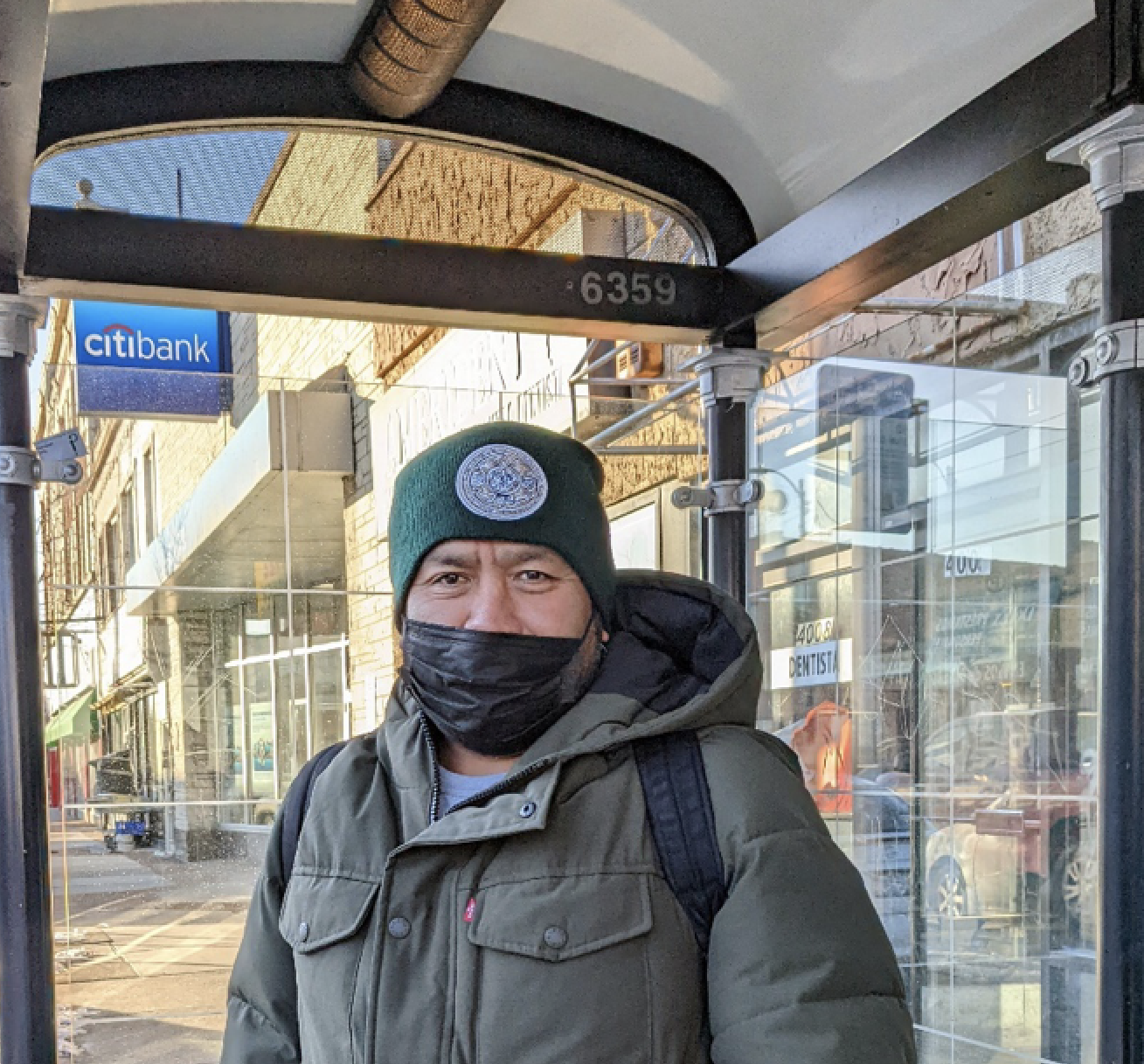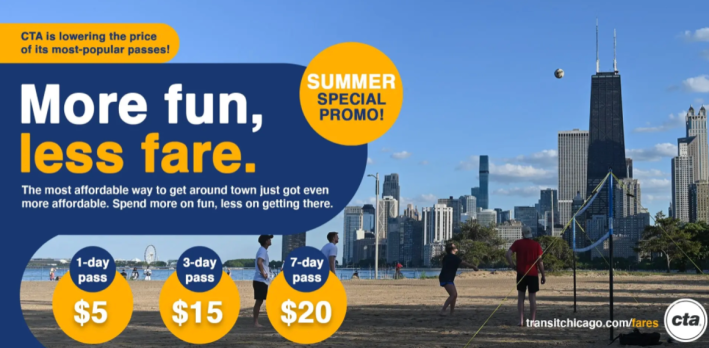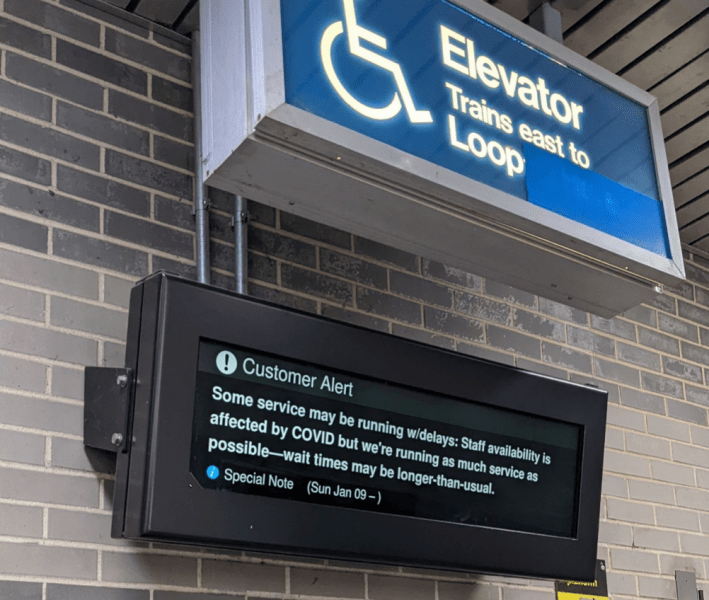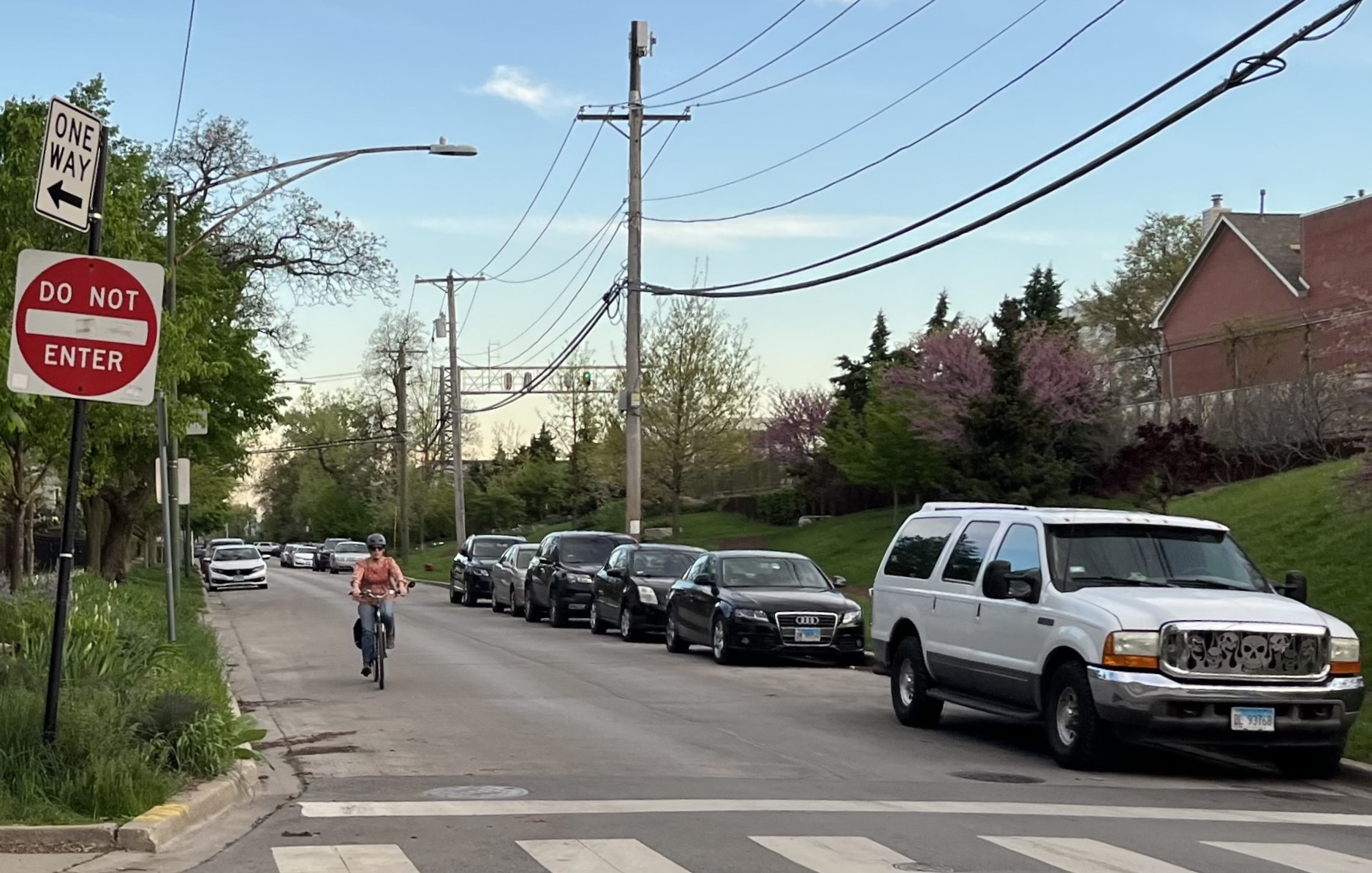Southwest Siders: Pandemic-related CTA delays are making our commutes harder
2:28 PM CST on January 17, 2022

Carlos, a Cicero resident who relies on the CTA. Photo: Ruth Rosas
Para leer este artículo en español, haga clic aquí.
The pandemic has had ripple effects on the way we move across our cities. As more people started to work from home, and people who had or were exposed to COVID-19 quarantined, people’s travel patterns changed and 2020 was a year unlike we had ever seen.
As the vaccine became readily available last year and people started going back into public spaces more often, we saw glimpses of what we considered more normal. In May 2021, the Centers for Disease Control and Prevention announced that fully vaccinated people no longer needed to wear masks indoors. People who were able to work from home were able to go back into their offices, people started going out to dinner and to bars more often, and large events like music festivals returned. This led to more cars on the road but also a huge increase in CTA ridership, which in September 2021 reached the highest levels since the start of the pandemic.
Hoping to continue coaxing more riders back onto buses and trains, the CTA ran a summer promotional fare called “More Fun, Less Fare.” The fare reductions helped increase ridership throughout the summer, especially during the large events that returned in 2021, like Lollapalooza. In October 2021, the CTA announced that it would extend the summer promotion and permanently reduce the price on the unlimited-ride passes and eliminate the 25-cent transfer fee.

The CTA also announced there would be no service cuts in 2022, just as as they said there had been no service cuts throughout 2020, even when ridership was at its lowest point. In October 2021, CTA officials said, “[CTA] was the only major U.S. transit agency that did not reduce or cut back on service throughout the pandemic in order to provide an essential service to those who needed it the most: health care workers, emergency responders, grocery, manufacturing workers, and those needing to make everyday essential trips to the doctor, grocery store, and pharmacy.”
However, CTA users have experienced delays and disrupted schedules due to service gaps caused by staffing shortages. This especially affects those who regularly rely on public transportation to get to work, like essential workers. In April 2021, a survey showed that those who have been most reliant on transit are essential workers, people who identify as Black and Latine, and low-income individuals. The CTA reported that 75 percent of current riders report an income below $50,000 and 38 percent identify as Black or African American and 15 percent identify as Hispanic, Latino, or Spanish origin.
This all serves as a reminder that those in power have created unequal systems. On one hand, there are people who could stay home and choose when they want to use public transit and those that rely on it for their livelihoods.

The neighborhoods of Pilsen and Little Village, predominantly Mexican-American, Mexican, and Mexican-descent communities, are serviced by the CTA Pink Line and several bus lines. Unlike other 'L' lines that have seen de-facto service cuts during the pandemic due to work shortages, the Pink Line was one of the lines that did not see such a large change in service. However, local residents told me that nowadays Pink Line trains do run behind schedule, and Train Tracker displays are not as reliable as they once were – more on that in a bit.
As you enter CTA train stations, the Train Trackers show a Customer Alert that staff availability has been affected by COVID and the wait times may be longer than usual. According to the CTA website, this alert was released Sunday January 9 and the end date is TBD. This is probably due to the more easily transmitted Omicron variant outbreak that hit Chicago last month.

As a person who relies on public transit, I have been stuck waiting for buses and trains, unable to get an accurate arrival time. One December evening around 6 p.m., I was heading home from the airport to the Southwest Side. I had just gotten off the Clinton Blue Line and wanted to catch the the #157 Streeterville/Taylor bus that runs all the way to the Pulaski Pink Line. Each time I looked at the CTA Bus Tracker, it would say the bus was 15-20 minutes away. But when the predicted arrival time came around, that bus would disappear. Unable to tell whether the bus would actually show up, and unable to get on a bike because I had luggage, I started tried to hail an Uber or Lyft ride. Both ride-hail drivers cancelled, which has also become common during the pandemic. Luckily, the bus arrived, and I was able to get home. I had waited an hour and 45 minutes for a single bus to arrive.
Other Southwest Side residents shared similar stories. I interviewed Fabian, a man who is deaf and relies on the Pink Line to get to work, catching it at the Central Park Avenue station. He said he’s had to wait many times for over 20 minutes in the cold for a train.
Another CTA rider told me the delays have been worse lately and she doesn’t trust the trackers to be accurate anymore. She hopes to get a car, so she can stop using the CTA.
Carlos, a Cicero resident who has worked in Hermosa for the past eight years says he has seen an increase in his commute time since the pandemic started. Most often, he uses the #60 Blue Island/26th and #53 Pulaski bus to get to and from work. He said that the #53 is delayed more often than the #60. If he misses a bus, he can wait for more than 30 minutes for the #53. The delays wait especially bad at times when children are commuting to and from school, especially in the afternoon when, “Sometimes it’s 30 minutes, sometimes it’s 45 minutes, and sometimes two to three buses show up together.”
Transit workers have been among the residents most affected by COVID-19 infections. During the pandemic, CTA operators have also frequently been the target of violence, which have led to calls for more protections for them. It is clear that transit employees need better safety mechanisms in place and better working conditions.
While CTA operator positions are union jobs that pay middle-class wages (part-time bus drivers currently start at $23.44 an hour), they deserve higher pay for the demanding, essential work they do. The attrition at the transit agency reflects the larger trend of U.S. workers growing tired of being undervalued and having insufficient workplace safety. We also need better policies that help prevent COVID-19 infections, especially for those who have kept our city running throughout the turmoil we have experience over the past 22 months. Otherwise, public transportation ridership, revenue, and service levels will fall even further as current customers abandon an unreliable system.
Stay in touch
Sign up for our free newsletter
More from Streetsblog Chicago
Due to incredible support from readers like you, we’ve surpassed our 2023-24 fundraising goal
Once again, the generosity of walk/bike/transit boosters is fueling our reporting and advocacy.
Which Metra corridor would become more bike-friendly and greener under a new plan? Ravenswood!
Thanks to plans to convert little-used parking spaces, the avenue is slated to get a new bike lane, and the Winnslie Parkway path and garden will be extended south.
They can drive 25: At committee meeting residents, panelist support lowering Chicago’s default speed limit
While there's no ordinance yet, the next steps are to draft one, take a committee vote and, if it passes, put it before the full City Council.



